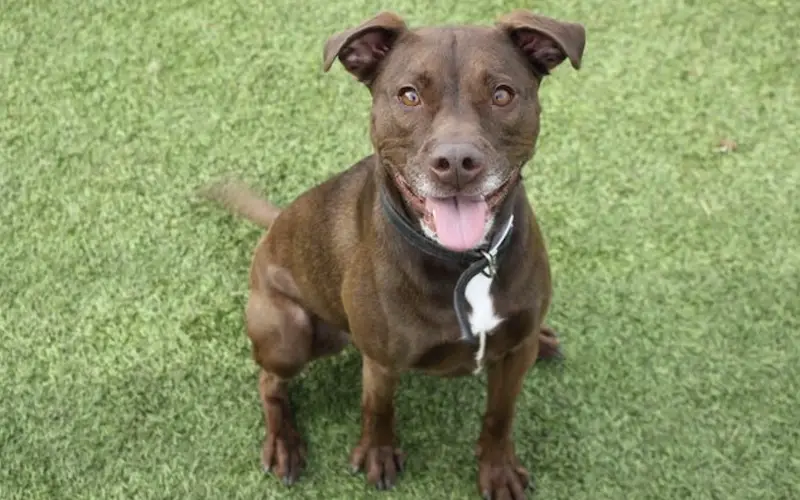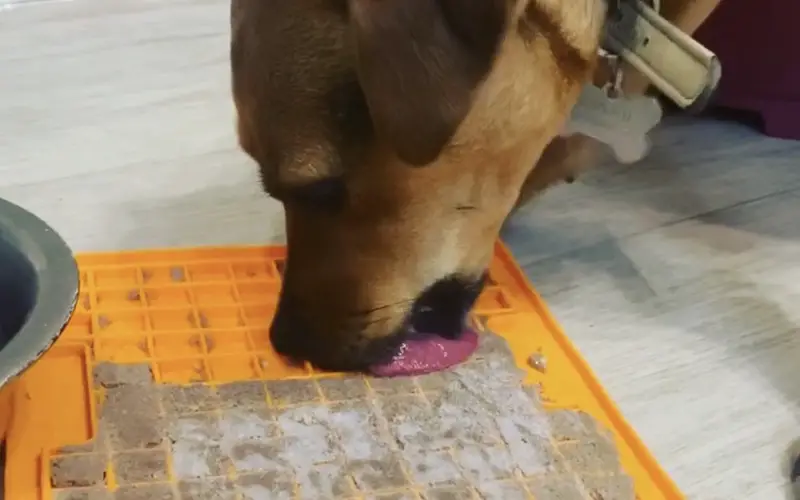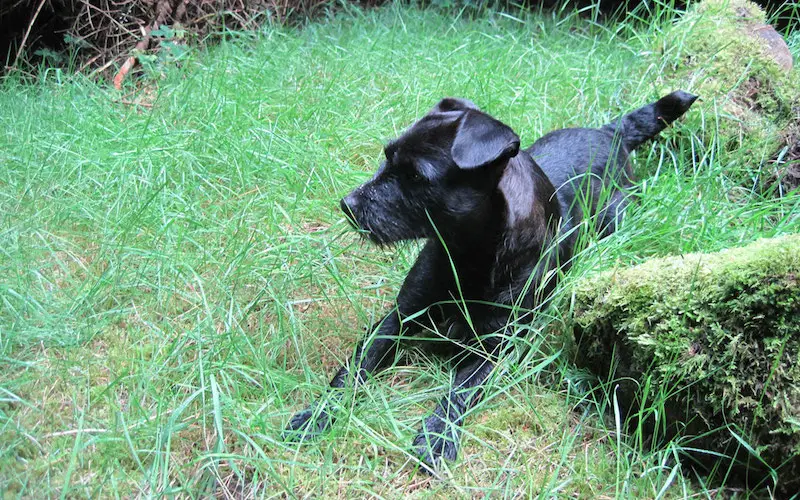patterdaleterriers.co.uk is a participant in the Amazon Services LLC Associates Program and other affiliate advertising programs designed to provide a means for us to earn fees by linking to Amazon.co.uk and affiliated sites. Affiliate links may be used on this page and in patterdaleterriers.co.uk articles, but they do not impact on the price that you pay and they do help me to get this information to you for free. Read my privacy policy for more information regarding affiliates.
Lets not beat around the bush – Patterdale terrier training is tough! They are a feisty breed with a strong chase instinct and highly scent driven. Patterdale terrier training should not be taken lightly – it takes a lot of patience and trust building.
Of course the earlier that you can start training your patterdale terrier, the better. Many people who are training working dogs or looking for a family pet start training from pups at around 12 weeks. However, if you are adopting an adult dog, patterdale training is even more of a challenge!
Patterdale Training First Steps – Obedience
Patterdale terriers are bold, confident dogs. Typical of most terriers they have bags of energy, with a feistiness which comes their origins hunting foxes and rodents. But while they’re packed full of personality, they can be quite stubborn with a mind motivated by food. Therefore, it’s crucial to be firm and confident when dealing with Patterdale terriers. They need to know you’re the boss!

Basic Obedience
An obedient Patterdale is a pleasure, but fail to lay down the law, and your dog may assume they’re the alpha in charge. Ideally, Patterdales should begin training following eight weeks old.
Begin by setting simple house rules. These differ depending on each households’ requirements, but can include: not jumping up without being invited, not being allowed on furniture, or not biting furniture. Be consistent with your rules, and always enforce them.
Next, you’ll want to teach your dog some simple commands. When they are young or first come to live with you, start by doing the basic commands of sit, down, stay and leave. You can combine the command with the hand signal which gets an instant response eventually, and which is great if your Patterdale terrier ever goes blind.
- Heel – walk to the heel of the lead
- Recall – come back to you when called.
- Down – lays down on command.
- Sit – your dog will sit down on command
- Come – your dog will come to you and sit down
It’s essential your Patterdale can follow commands. When at a busy road, your dog must obey when told to stop. If friends or family come round, they must leave them alone when commanded. Confidence in your dog will lead to satisfaction for both parties, creating a firm and loving bond.

Teach your Patterdale terrier to Sit
For sit, most patterdales will do it naturally if you raise your hand with an upward ‘come’ movement. If they don’t get it straight away you can try tapping their bum and repeating the command when they sit, or even having a treat or tasty snack and moving it in an upward motion past their nose. Once they have got it, repeat and after a few days (or less!) it will stick.
Clicker Training
Clicker training is rewards-based, using the ‘clicker’ to teach your dog when it is acting correctly. Your dog will learn to associate the click with a reward until, eventually, the clicker itself is the reward.
Initially, a click must always be followed by a reward (even if accidental). A single click should be used for each correct behaviour and should be given at the moment the dog performs the desired action. Try to keep training sessions short, at most 10-15 mins. But feel free to repeat sessions throughout the day.
Teach the click: Go to a quiet location with their favourite treat. Click the clicker then immediately give them a treat. Repeat this for a few days, each session lasting only a couple of minutes.
Click for Behaviour: Now an association has been established, try to teach simple behaviours, e.g. sit. Use the treat or toy to create the desired behaviour, such as moving a treat slowly up and over a dog’s head to bring them to sitting. Remember to click as soon as the behaviour occurs.
Link the behaviour to the Command: Next, keep repeating step 2, but make sure to add in the command word. Continuing to click when the behaviour occurs. Don’t force your dog into a behaviour, as for the training to work, it requires positive reinforcement.
Keep practicing: Repeat training sessions a few times a day for 10-15 mins. Eventually, stop giving the treat, using the clicker alone to reinforce the behaviour.
If you’re looking for the right clicker, try out the Toozey dog clicker! Made from high-quality materials and producing a crisp, clear sound – it’s one of the best training tools on the market. You’ll also receive a free eBook to guide your training.
Once the basic are established, move onto more complex commands and behaviours using the same principles. However, the more complicated the behaviour, the more it needs breaking down into simple steps.
Leash Aggression and Training
An aggressive dog is usually a poorly-trained dog. Aggression arises out of a reliance on instincts of fear or possessiveness, rather than on proper training and explicit instruction. As an owner it is your responsibility to make sure your dog is well-trained.
Keep an eye out for aggressive behaviours, particularly body language. Your dog may make themselves more prominent, they may lock their gaze, or stretch their lips over the teeth. You need to understand your dog’s specific aggressive behaviours and react accordingly.
As dog’s are pack animals they respond to an ‘alpha’. That’s you! If you don’t fill that role, your dog will, and that’s when the problems begin. However, being an alpha doesn’t mean being aggressive. That only reinforces the idea that aggression is an acceptable response. Instead, focus on leading your dog in the correct behaviours rather than punishing the negative ones.
Leash lunging, reactivity and aggression are common forms of aggressive behaviour, caused by the dog feeling restrained or vulnerable. When you sense your terrier becoming nervous or displaying leash aggression try using their favourite toy or a treat to calm them down. As well as, employing the trained commands, e.g. ‘sit’ or ‘stay’. Just like the clicker, you are trying to form an association. In this case, between the negative stimulus and a positive reward. Over time, your Patterdale will learn new behaviours, becoming calmer and more relaxed.
Separation Anxiety
You terrier really does get attached to you. Separation brings out more than a whimper, but a deep feeling of anxiety. It can be caused by a change in environment or simply when you leave the house. Behavioural signs include:
- Excessive barking or howling
- Destructive behaviour
- Urination or defecation
- Excessive salivation or panting
- Incessant pacing
Treatment focuses on conditioning and desensitisation. If leaving the house causes anxiety, give a special treat when you’re going, or even hide them around the house for your Patterdale to discover. The Licky Mat for dogs is a tool specifically designed to aid with separation anxiety. It soothes and calms your dog through licking, promotes dental health, and keeps your terrier entertained while you pop out.

Don’t be overwhelmed or put off. Patterdale terriers are terrific dogs. Loyal and energetic, they make a fantastic addition to a family. Plus, they’re gorgeous creatures with fur in every shade of a chocolatier’s display. So, just follow the simple steps of positive reinforcement. Be a firm and confident owner, and you’ll earn your dog’s respect and love. Good luck!
If you enjoyed this article on Patterdale terrier training, you might also like to read about….


2 thoughts on “Patterdale Terrier Training”